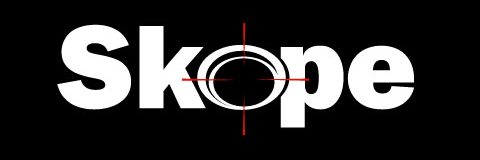Music sampling has transformed the industry, enabling artists to merge sounds of the past in excitingly creative ways with contemporary styles. Many of today’s biggest hits use samples of older songs, often so seamlessly that listeners may not even notice. From hip-hop to pop, sampling has significantly impacted various genres, demonstrating that great music never truly disappears; it simply gets reinvented.
Sampling not only benefits the newer artists but also the artists whose songs are being sampled. In fact, as per a report by Forbes, the copyrighted songs sold better in the year after being sampled relative to the year before to a 92.5% degree of statistical significance. Here are some songs that you didn’t know used samples:
Examples of Music Sampling
Here are some of the most well-known songs that implement sampling. If you’d like to learn more about this technique, you can check out the ultimate guide to music sampling for more insight.
-
Kanye West: “Stronger” (2007)
Kanye West is praised for his intricate production style, with Stronger being one of his prime examples of effective sampling. The track extensively samples Daft Punk’s Harder, Better, Faster, Stronger. But he didn’t just sample: Kanye transformed it into an entirely new anthem. It ultimately benefited both: Daft Punk gained a younger audience while Kanye established himself as an innovative producer.
-
Rihanna: “Work” (2016)
Rihanna’s Work is hypnotically mesmerizing with a dancehall beat that samples Alexander O’Neal’s If You Were Here Tonight. While the original is an ’80s R&B slow jam, the sample here became a fresh, modern rhythm, proving that even the slightest shuffled sound can alter the character of an entire song.
-
Eminem: “My Name Is” (1999)
Eminem’s breakout hit My Name Is features a sample from I Got The…, a 1975 soul cut by Labi Siffre. She altered the guitar riff and looped it to set the foundation for the song. In a fascinating twist, Labi Siffre declined the clearance of the sample until some of his lyrics were deemed offensive and stripped, wherein considerations of morality and artistry intertwined.
-
Beyoncé: “Crazy in Love” (2003)
Upon release, Crazy In Love by Beyoncé became infamous for its catchy brass introduction. But that horn section was not original—as she sampled it from Are You My Woman? (Tell Me So), a 1970s gem by The Chi-Lites. Such a crafty reworking of an under-appreciated funk song gave Crazy In Love its signature chemistry and smack.
-
The Notorious B.I.G.: “Mo Money Mo Problems” (1997)
Mo Money Mo Problems is one song forever etched in pop culture; it borrows heavily from Diana Ross’s I’m Coming Out. The original disco masterpiece is now a hip-hop anthem, illustrating how sampling is a tool that can alter the fate of songs from yesteryears.
-
Mark Ronson & Bruno Mars: “Uptown Funk” (2014)
Uptown Funk may appear to be a gem of funk-making even today. But it essentially samples the work More Bounce to the Ounce by Zapp & Roger. Dating back to 1980, this disco-funk track lent a lot of its rhythm and vibes to the buoyant groove-heavy production, making Uptown Funk an instant international hit.
-
Drake: “Hotline Bling” (2015)
Drake’s Hotline Bling is built around a sample from Why Can’t We Live Together, a soul record from 1972 by Timmy Thomas. Hotline Bling’s simple yet effective instrumentation evokes a nostalgic, somber feel. It proves that even the simplest of samples can define the character of a track.
The Legalities of Sampling
While music sampling is a powerful creative tool, it also presents legal challenges. Unauthorized sampling can result in lawsuits, with some artists facing hefty damages for failing to secure rights to the original material. For example, Kanye West has encountered multiple lawsuits over alleged unauthorized samples in his songs, underscoring the necessity of obtaining proper clearances. This is why many platforms offer structured music sampling guides, assisting artists in legally and efficiently incorporating samples into their work.
Endnote
The rise of digital sampling platforms has enabled independent musicians to access high-quality samples legally, making it easier than ever to experiment with sound. Today, sampling isn’t just about recreating the past; it’s about transforming it into something entirely new. From hip-hop to pop, sampling continues to influence modern music in surprising ways. The next time you hear a hit song, listen closely; you might just discover a piece of history woven into the melody.
